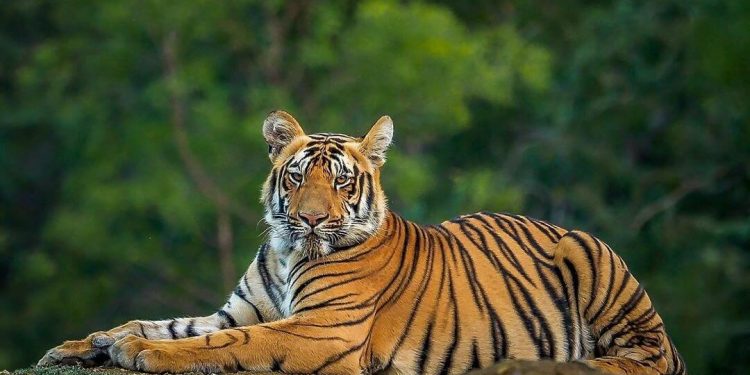More than 1,000 residents of Dusutimukh village in Golaghat district, Upper Assam, brutally killed an adult male Royal Bengal tiger on Thursday in what they termed an act of revenge for alleged human and livestock casualties. The shocking incident has raised serious concerns about human-wildlife conflict and tiger conservation in the region.
The mob, armed with spears, iron sticks, and machetes, not only killed the endangered animal but also dismembered it, removing and taking its legs, ears, skin portions, and teeth as souvenirs. The gruesome nature of the killing has drawn widespread condemnation from wildlife conservationists and government officials.
Village residents justified their actions by claiming the tiger was a “man-eater,” citing an unconfirmed incident involving the death of a person in a nearby village approximately one month ago. They also blamed the tiger for recent livestock losses, including attacks on pigs and goats, which had allegedly caused economic hardship for local farmers.
According to Golaghat Divisional Forest Officer (DFO) Gunadip Das, the mob pursued the tiger into a wooded area before carrying out the killing. The incident represents a tragic escalation of human-wildlife conflict that has been brewing in the region due to habitat encroachment and increasing encounters between wild animals and human settlements.
Local MLA Mrinal Saikia strongly condemned the incident, emphasizing the need for coexistence between humans and wildlife. “It was a very painful incident. The earth is not only for humans, it is for animals as well. Wild animals also need space,” Saikia stated, demanding strict action against the perpetrators.
Forest authorities have registered a case in connection with the incident and arrested one person so far, though the large number of participants in the mob killing presents significant challenges for law enforcement. The investigation is ongoing to identify and apprehend other individuals involved in the crime.
This tragic incident occurs against the backdrop of growing concerns about tiger conservation in Assam. Earlier this year, two tiger carcasses were discovered in the state—one from Orang National Park and another from the Biswanath wildlife division—highlighting the mounting pressures faced by the endangered species.
The Royal Bengal tiger is classified as an endangered species under the Wildlife Protection Act, 1972, and killing one carries severe penalties including imprisonment and heavy fines. India is home to approximately 70% of the world’s tiger population, making conservation efforts critically important for the species’ global survival.





